The first time I attempt to step inside Sahadi’s Importing Company in Brooklyn, I have some trouble getting through the door. Crossing the threshold from Atlantic Avenue proves challenging thanks to a school of twenty-somethings blocking the door, all bobbing around the store’s famous bulk bins, nodding in unison to a small woman with a sleek black bob at the lead. She’s barely visible from where I stand, but is clearly a commanding presence.
Later, I find this is a food studies class on a field trip from NYU, swapping a cozy classroom across the East River so they can learn from their formidable guide, Christine Sahadi Whelan. But a grocery store? It hardly seems an apt classroom. Then again, most grocery stores are hardly the kinds of places that pull culinary accolades like a James Beard Foundation Award (American Classic, 2017). And most grocery stores can’t claim 122 years of history. Perhaps in this case, a docent is necessary.
Growing up, museum field trips were my favorite. I showed up for the bus, permission slip in hand, and although I didn’t know much about art or artifacts, I understood that in those places, I would see a special thing. Something that—somewhere in the world, at some point in history—another human being poured their soul into.
This is my first time at Sahadi’s, and I didn’t come prepared to take in an afternoon of culture—I just need some pomegranate molasses. It was coming up on Thanksgiving, and our brussel sprout recipe (well, Bobby Flay’s) called for the ingredient I knew I’d be hard pressed to find in the supermarkets of my Connecticut hometown. When I asked Brooklyn neighbors where I might be able to source the stuff, I was met with disbelief that I’d never been to Sahadi’s.
This was extra shocking to friends familiar with my well-documented love of dried fruit, nuts and anything a caveman might consider a snack; the bulk bins of Sahadi’s are of interborough fame. And once the co-eds clear the way, I understand why. I am immediately struck by the staggering breadth of the offerings. The standbys are there—the raisins and peanuts, cashews and pistachios. And then there are other delights, many offered to me in samples: chewy dried strawberry rubies that beat the hell out of any gummy bear I’ve ever gotten my teeth around. Fattened, splitting figs and photo-ready candied starfruit. Licorice of all colors and kinds, mints and milk chocolate nonpareils. Everywhere I turn are items I’ve never even imagined, and certainly haven’t found at other stores.
But it’s not only the things I’ve never seen in other grocers’ aisles—it’s what I never smelled. At Sahadi’s, there was real aroma—the warm toast of almonds, sharp bitterness of dark chocolate, spiced sugar from a massive jar of crystallized ginger. There’s a freshness—a quality—that suddenly I realize I never knew I was missing.
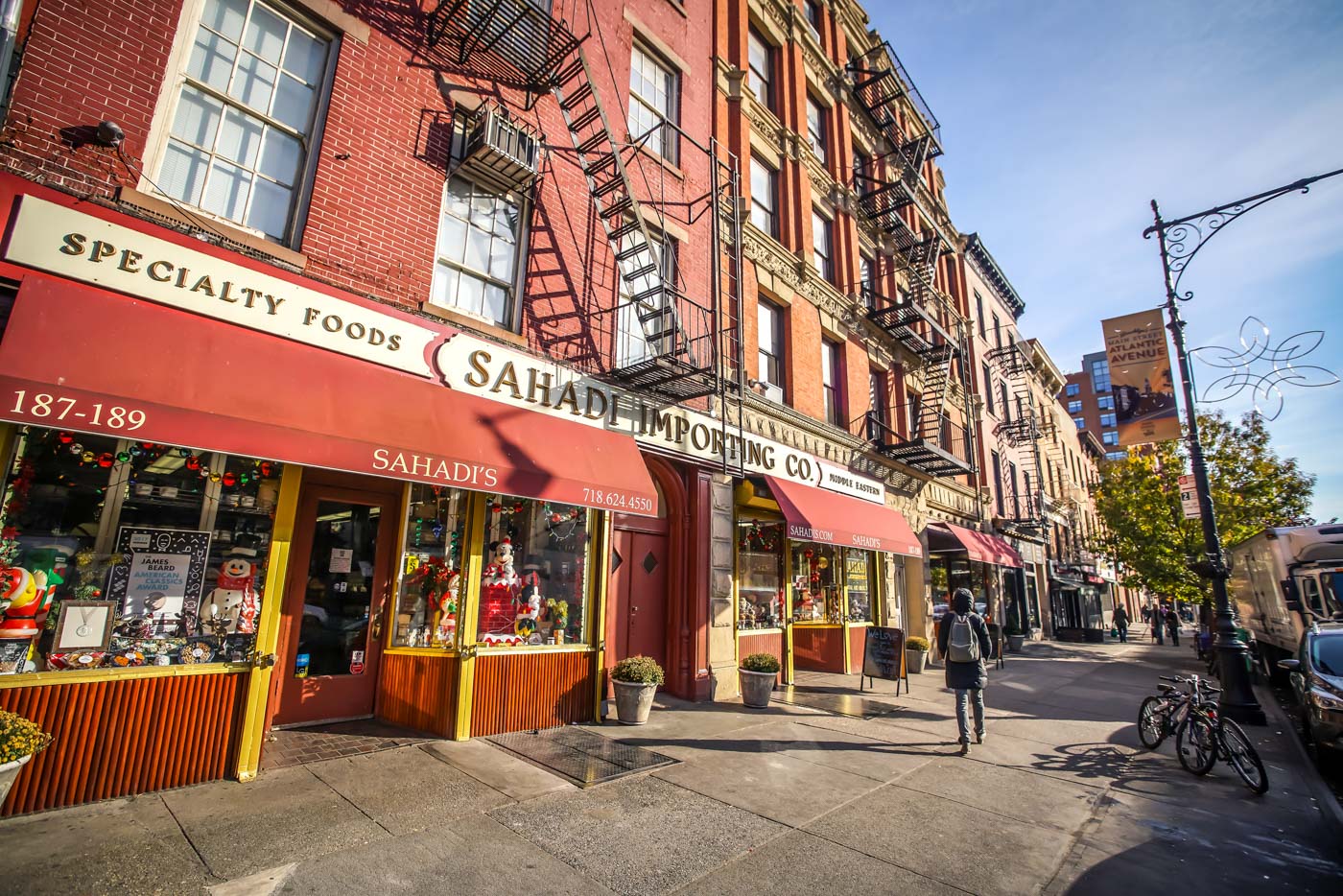
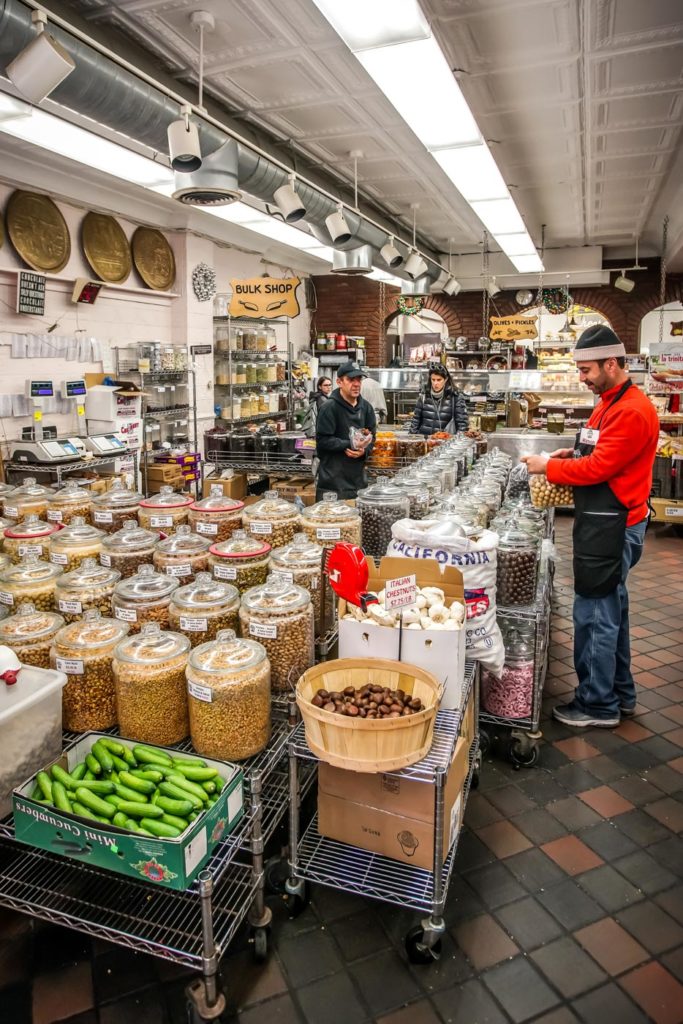
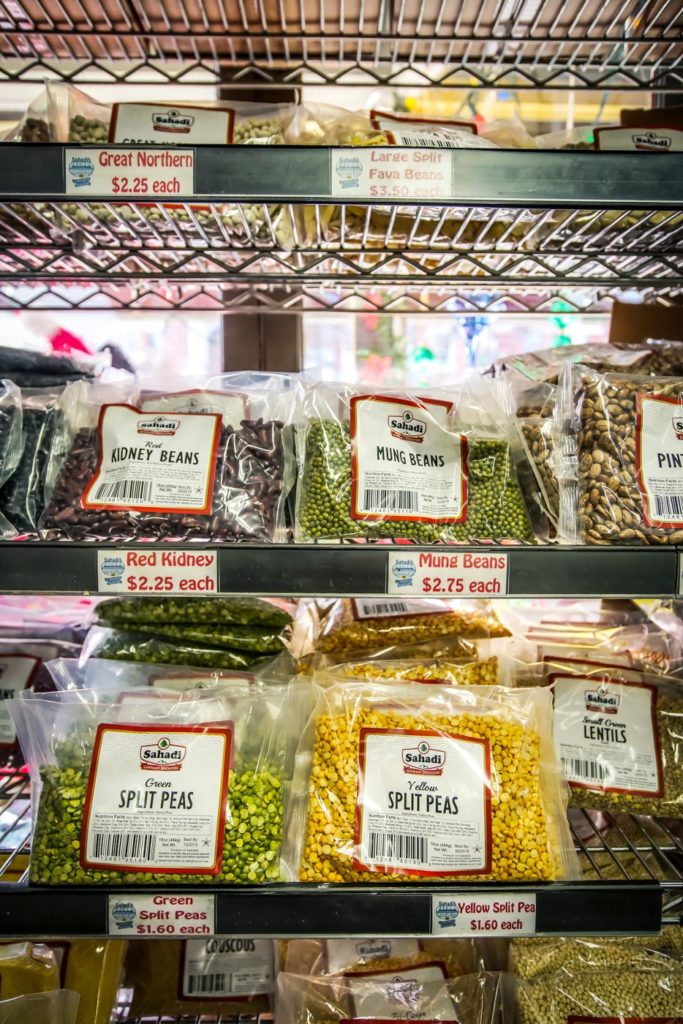
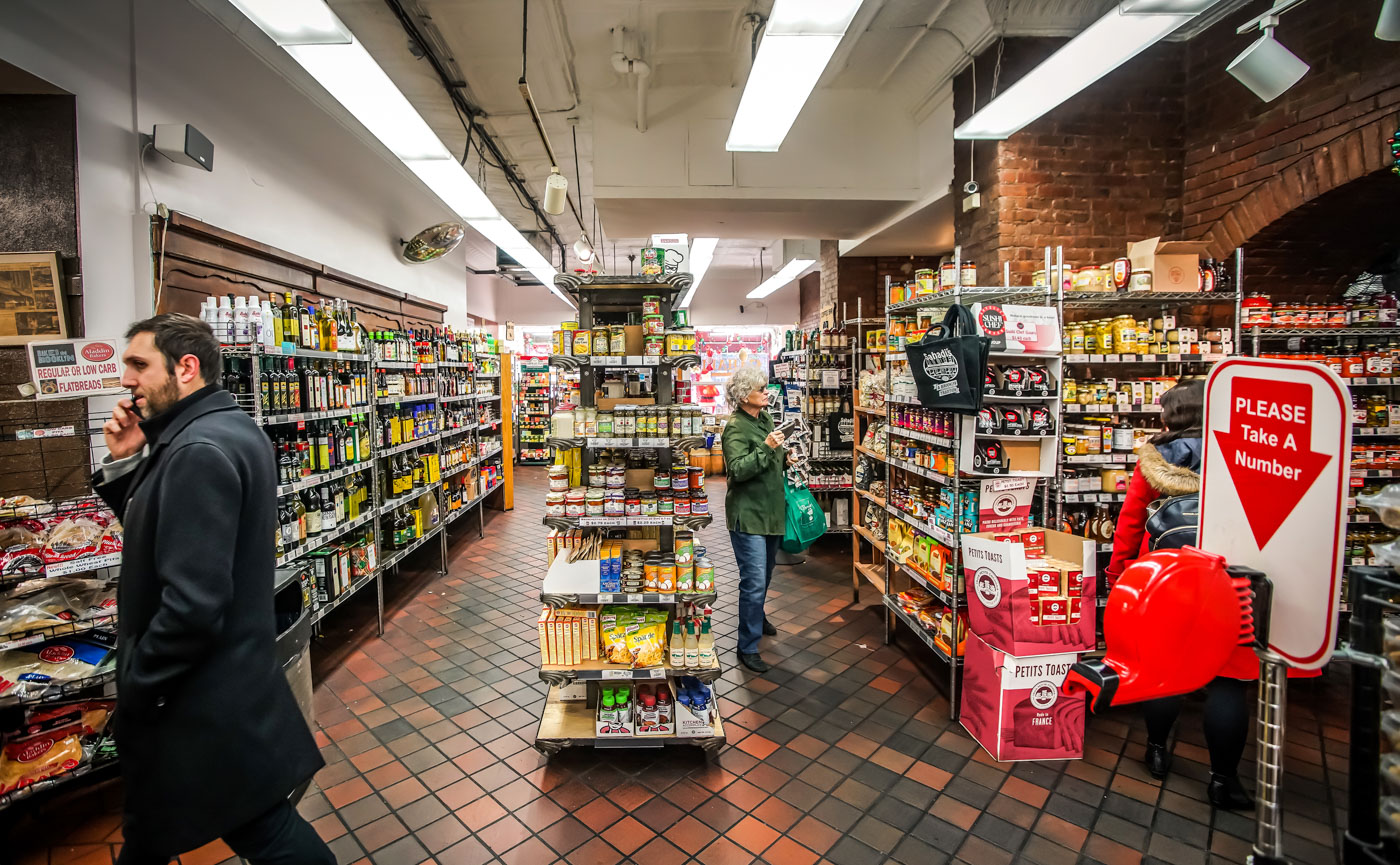
Once I wrench myself away, I’m met with a choose-your-own-adventure shopping experience. Nearby, a bar of olives in all shapes and sizes. Beyond that, a room entirely dedicated to cheeses from around the world and their accompaniments. Operating on the opposite side of the wall is a deli where clerks help customers making their regular stop. I pick up banter in at least three languages, ranging from clearly food-related questions (Are you out of dolmas?) to neighborly conversation (How’s your mother-in-law?). An adjacent bakery where customers snap up zaatar bread and baklava provides an aromatic compliment to serve-yourself coffee bean bins and a small bar where a barista pours by the cup.
There’s a wall of freshly weighed and packed spices, and a variety of chocolates and baking ingredients. There are freezer cases packed with fresh pastas, yogurts and sauces. And the remainder of the footprint is filled with clusters of metro-racks, each tightly packed with international ingredients arranged by region. I find the molasses easily, but also Asian fish sauces and Greek moussaka, Italian vinegars, and Indonesian sambal oelek.
I read labels like didactic panels, and admit that by the time I reach check out, I’m a little dizzy with information. I thank the clerk, carrying heavy bags and not quite remembering what I’ve picked up in my stumblings, and I realize why students from one of the country’s top universities would find themselves here. Christine is not technically a professor, but as part of the third generation to helm the market, she is a born educator. Because this is no grocery store. Sahadi’s Importing Company is a museum.
“In 2001, they had an exhibit at the Museum of The City of New York about Middle Easterners in New York,” Charlie Sahadi tells me when I return, several months later, this time seated comfortably in a desk chair, a level above the bustle of the store in an office shared by the seventy-three-year-old proprietor, his wife, Audrey, and their children—son Ron and daughter, Christine—who have taken on operational roles.
We’re discussing the neighborhood. Sahadi’s sits on a stretch of Brooklyn’s Atlantic Avenue that feels as if it’s not quite sure exactly what it wants to be. Or perhaps more accurately, where it wants to be. The Yemeni café and Syrian bakery that surround the importer’s three storefronts suggest Brooklynites have been transported to Middle Eastern lands. But the Barneys New York and Urban Outfitters are more indicative of being over-the-river and through-the-tunnel to Manhattan.
But Charlie recalls a different Atlantic. “I have been doing this fifty-two years. This area is completely different. There were a lot of mom-and-papa stores when we came; there were three bakeries, small grocery stores, meat stores, odds and ends stores,” he says. “There were two Middle Eastern pastry shops, and two Arabic record and tape stores. We had a very diverse street, but mostly Lebanese and Syrian.”
Charlie continues describing what he’d learned from the exhibit. He tells me of major Middle Eastern migrations in the mid-1960s, and again between the ‘80s and 2010—waves diverse in origin nations, comprised of both Muslim and Christian populations. “There were Egyptians, there were Palestinians, there were Yemeni,” he says. “It brought new flavor to the New World.”
Flavor might be what people brought with them, but it was what they left behind that drew them to Sahadi’s, which intended to serve those Middle Eastern communities the products they sorely missed. The company’s website calls the store “A Brooklyn tradition.” After more than seventy years, it seems safe to make such a claim, but the story of Sahadi’s actually began more than a century ago, in Manhattan.
After Charlie’s great uncle, Abrahim, arrived in the United States from Lebanon in the late nineteenth century, he set up shop—an importing business—in Little Syria on Washington Street in 1895 as A. Sahadi & Co. In 1920, Charlie’s father, Wade, immigrated from Lebanon to work with Abrahim, hoping to send money home to support the family. But after a little more than two decades, Wade and Abrahim fell out. “In 1941 they had a parting of ways—an argument,” Charlie tells me. “My father left A. Sahadi & Co.”
Wade had become a small partner in the company; what he parted with helped get him started on his own. “He was bought out with lentils and chickpeas and feta cheese and olives, and he took those items and moved half a block away and opened Sahadi’s Importing Company,” Charlie says. Wade operated there until the construction around the Battery Tunnel began to disrupt his business. In 1946, he purchased a building where a barber shop operated on Atlantic. Wade waited out the remainder of their lease, and in 1948, the Sahadi’s Importing Company Brooklyn knows today opened its doors.
The original A. Sahadi & Co. continued to operate until it was acquired by Knox Gelatin in 1967, which in turn was acquired by Lipton in 1972. The company was sold in 1985, but Wade’s Brooklyn store will celebrate its seventieth year on Atlantic Avenue in 2018.
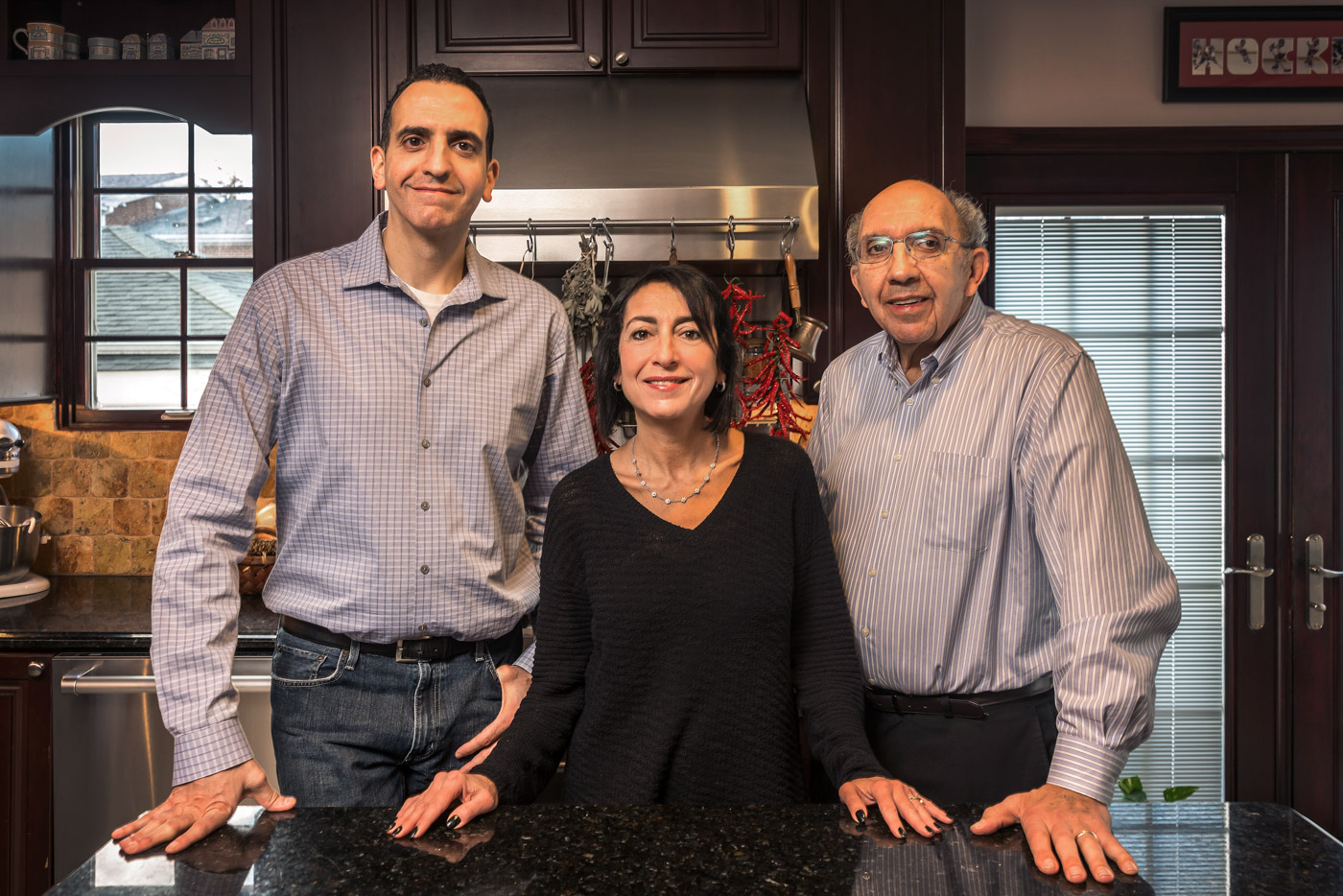
Clearly, Wade was a very active businessman. But by all family accounts, he took enjoying life as seriously as he did his work. “Everyone talked about how he was the life of the party,” Charlie tells me. But it’s something he didn’t have the chance to see; Wade was ill most of his formative years. “In my young adult age, he was in and out of hospitals. They were just stories and I kept saying, ‘That can’t be my father.’” It wasn’t until Charlie and Audrey’s wedding day in 1964 that he experienced this fairytale version of his father. “The day we got married, my dad was up dancing; he was the host of the party! I had never seen that,” he tells me. “And for the next three or four days he couldn’t get out of bed with his arthritis. He overmedicated himself for the day.”
It was in the 1960s—the same decade in which Charlie and Audrey celebrated their wedding—that he and his brother Richie joined the business. The store had been specifically serving Syrian and Lebanese communities, then the broader Middle Eastern population. But the brothers, who were keeping close watch over their changing neighborhood, saw an opportunity to grow. “As we progressed, we expanded into specialty foods as opposed to just Middle Eastern foods because we were limiting ourselves,” Charlie says. “There was so much potential.”
The diversifying neighborhood didn’t give Charlie pause. He grew up in Bay Ridge, Brooklyn, where he recalls friends and neighborhood kids who might be half Greek and half Irish—orthodox like his family, or Roman Catholic. Where regardless of culture, families were connected through the simple commonalities of sharing sidewalks and stoplights, corner delis, and places of worship—in some cases, remaining so today. “We had a very diverse group of friends,” Charlie explains. “I think I have fourteen friends who went to kindergarten with me who are still around, and I’m seventy-three years old.”
Charlie’s early exposure to the world came to him in the form of other neighborhood families, and through the products at Sahadi’s. He wouldn’t visit Lebanon himself until five years after Wade passed away. Charlie says he, Audrey, and their three children—at the time, all under the age of five years old—traveled to Lebanon in 1972, “for two reasons: I wanted to meet my relatives, and also some of my suppliers.”
Over the course of a twenty-eight-day visit, Charlie accomplished both of those missions—and also picked up a new perspective of his culture. He’d been interacting with Lebanese Americans in the store for decades, but the trip helped him understand certain quirks and ways of living. For example, the propensity of Lebanese immigrants to bargain with him at Sahadi’s, although he shared their heritage, was a totally foreign practice to him. “Once you’re there and you learn the culture, you say to yourself, ‘Now I understand why they do that.’ But we give them the right price to start. We want them to understand that.”
It was sixteen years after that initial journey before Charlie returned, during which time a war had taken place. “We went back in ‘98, which was a time of rebuilding in Lebanon,” he says. The Lebanese Civil War lasted from 1975 to 1990. “There was a great deal of destruction,” he says, remembering a country in transition. “One side of the street they were building, and on the other side they were bombing. It was like, ‘Go ahead, you can bomb that side, but don’t bomb this side, because we’re building.’ Even in war, there was some respect there.”
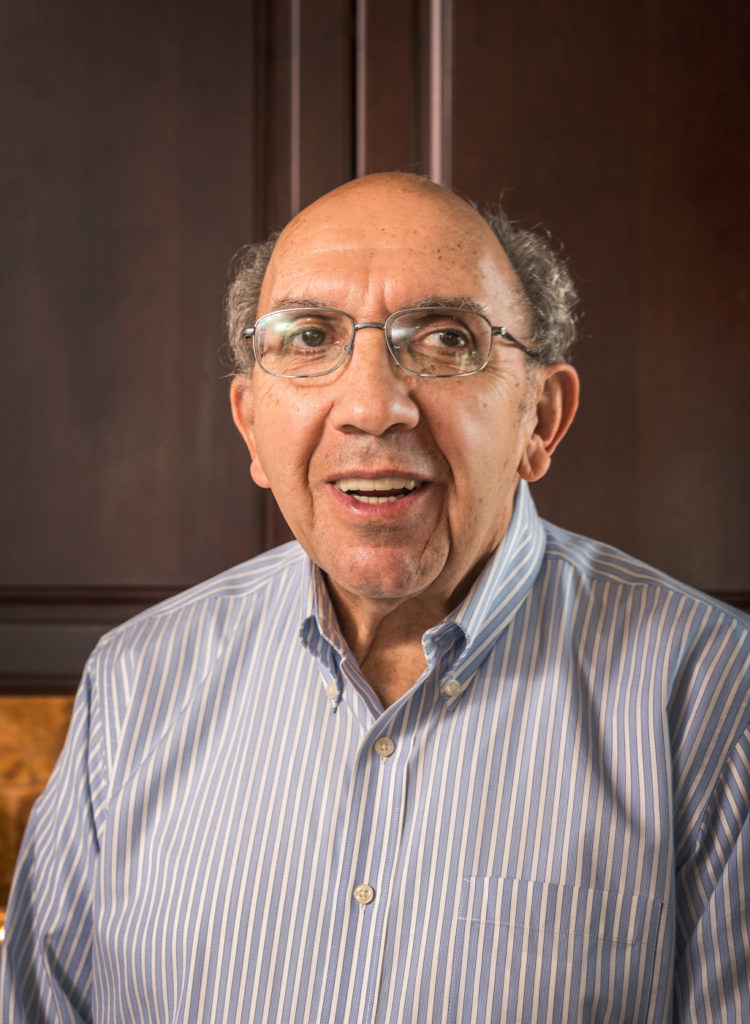
“My aim has always been to respect and tolerate different people. You may not always agree with them, but we should learn to live with those different opinions. That’s the beauty of America—we’re allowed to have different opinions.”
In addition to claiming more than 150 thousand lives, the war prompted the exile of more than one hundred thousand citizens. “A lot of the Christians left Lebanon during the war because they didn’t see any future for their families. They owned homes, and if you left your home empty long enough, there are squatters rights, so you lost your home—that was the biggest thing of value,” Charlie tells me. “Many of them had to go back and relocate, and in some cases go to court to get people out who were living there because they were gone for six, seven, [in some cases, up to] fifteen years.”
Peace has been something that evaded his father’s country, but Charlie has a decidedly pacifist personal philosophy, which he credits in large part to his Brooklyn upbringing. “My aim has always been to respect and tolerate different people. You may not always agree with them, but we should learn to live with those different opinions. That’s the beauty of America—we’re allowed to have different opinions. It doesn’t mean I’m going to pull a gun or a knife out. That’s how most fights start—somebody throws a stone. Another guy pulls a knife. Another guy gets a gun, and now you have a war. And if you look back, nobody knows how it started,” he says. “Many people died because of things like that.” Charlie is silent for a moment—as are his wife and two children, quietly working together in this same room. “Life is too precious to give it away like that.”
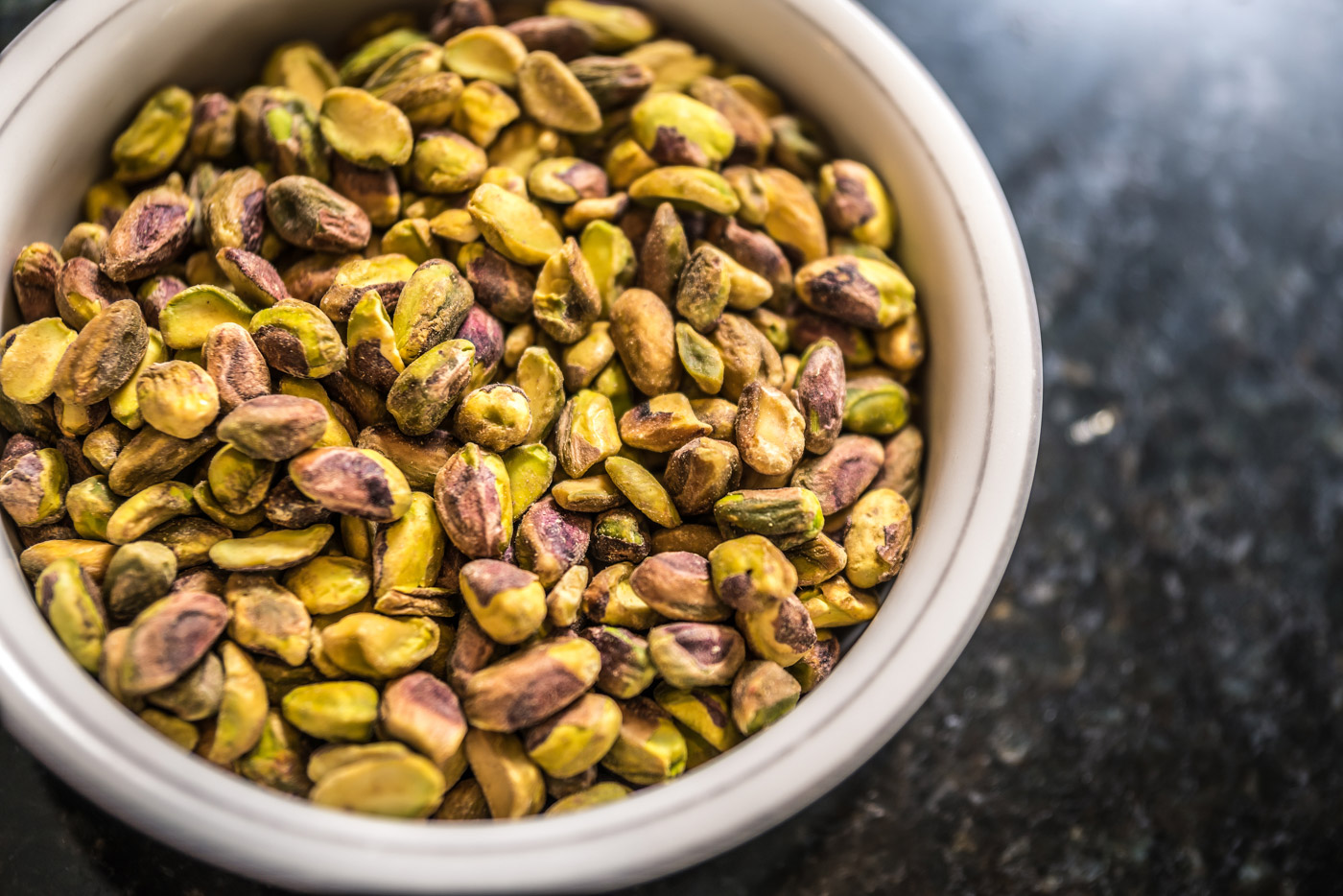
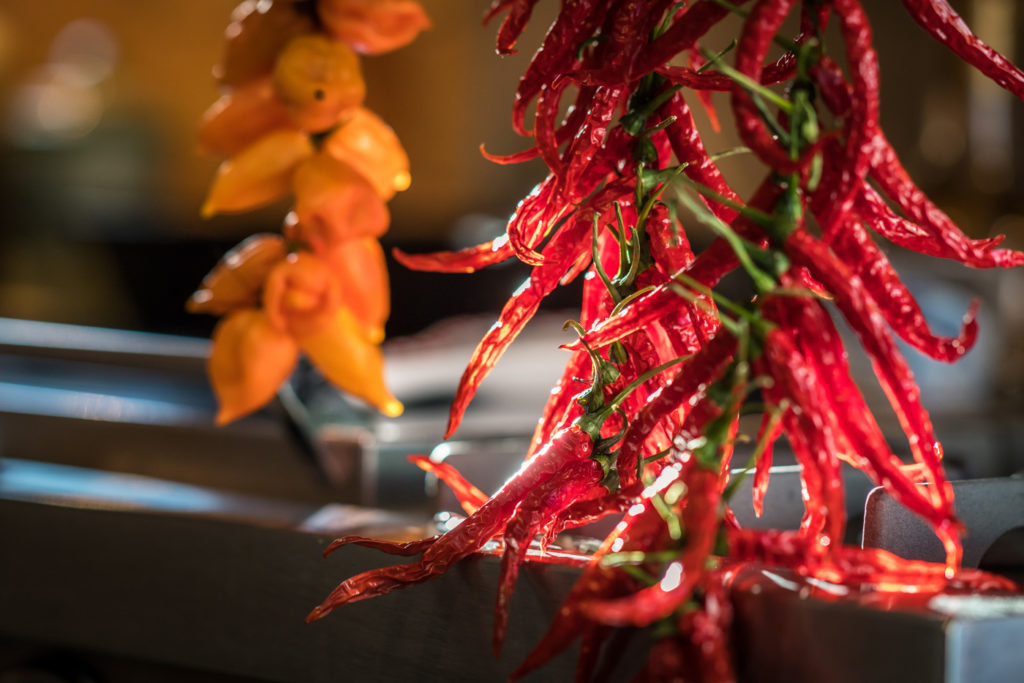
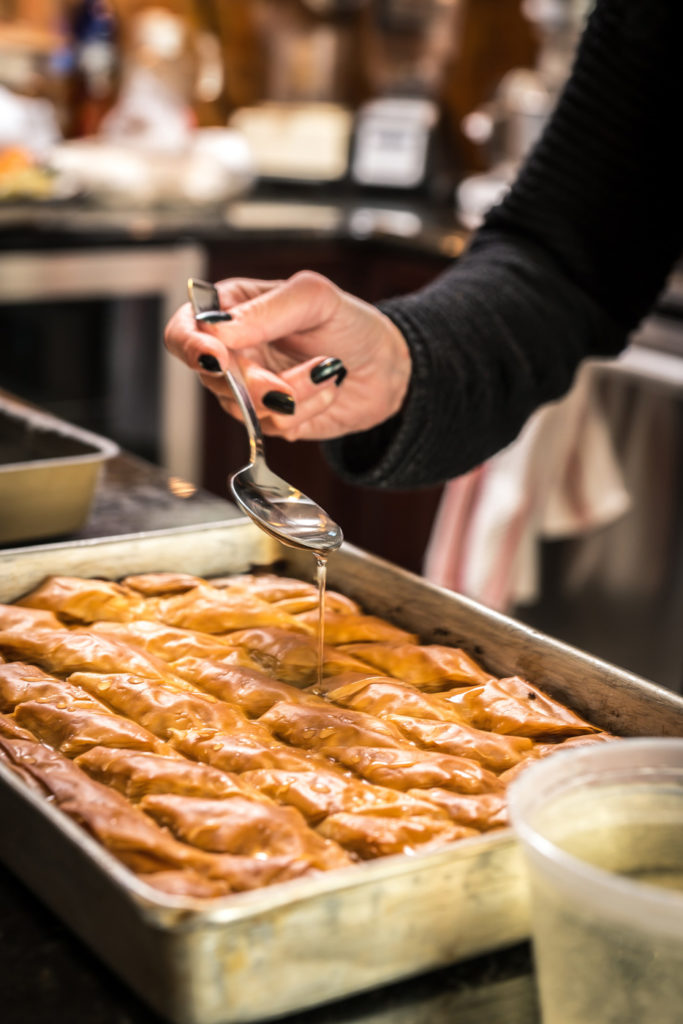
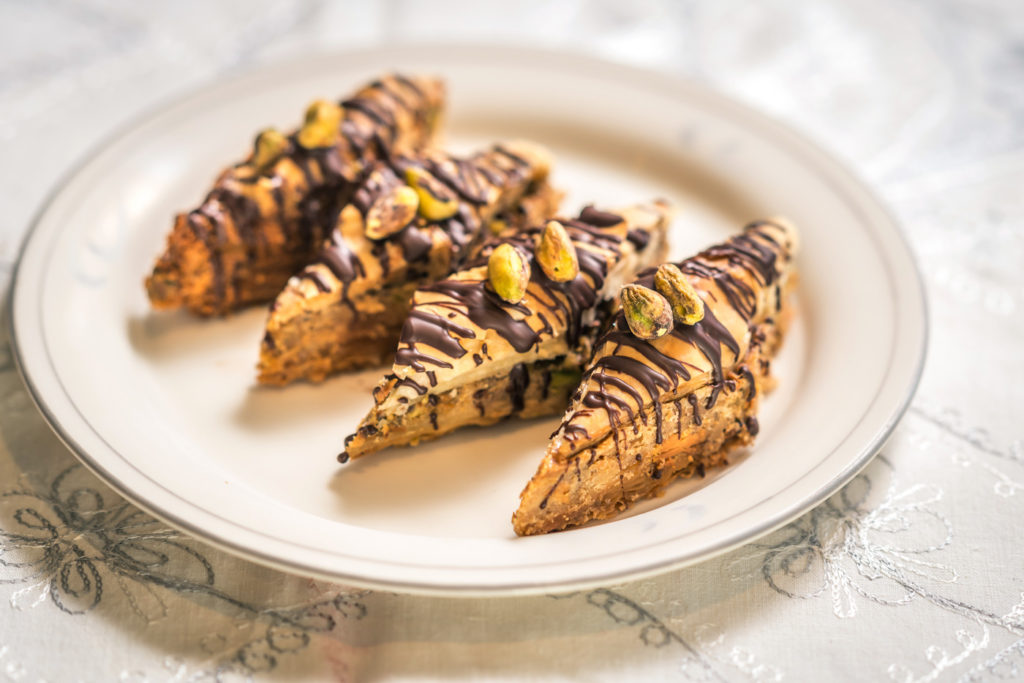
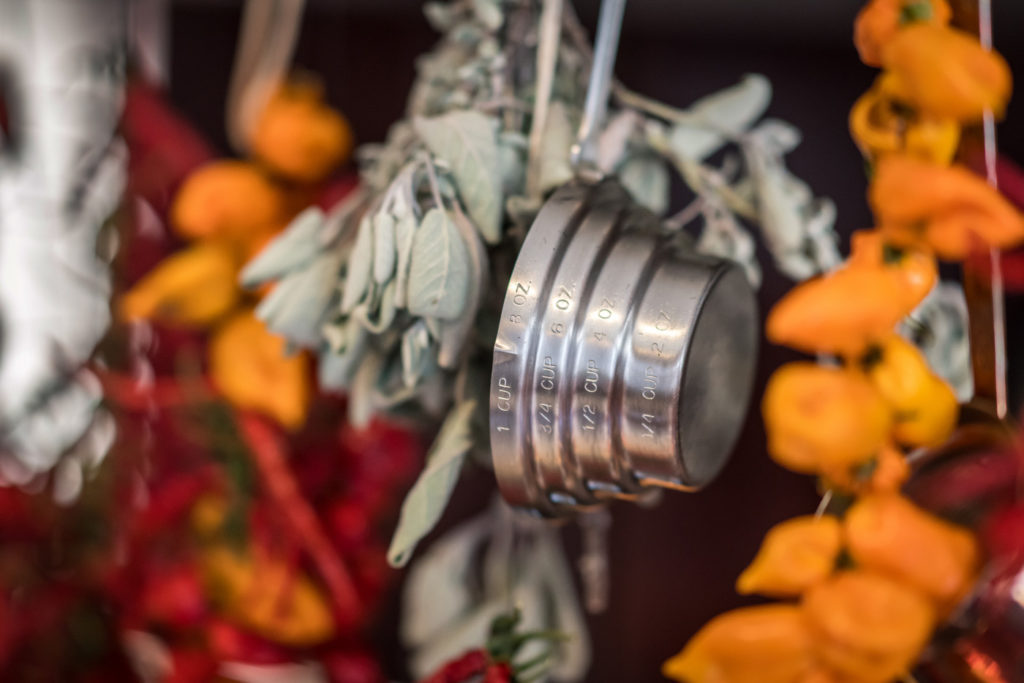
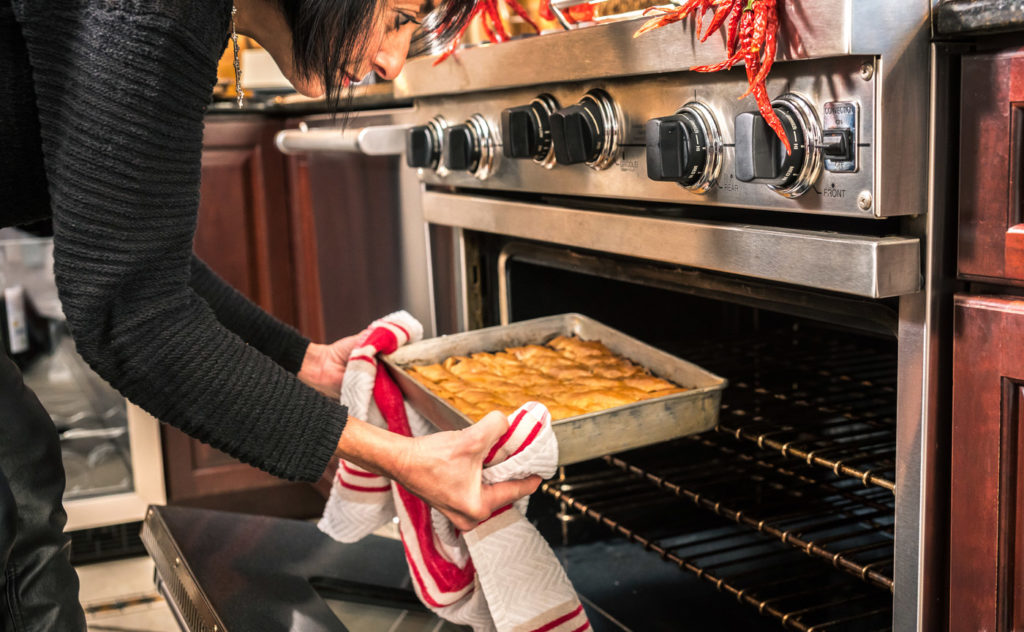
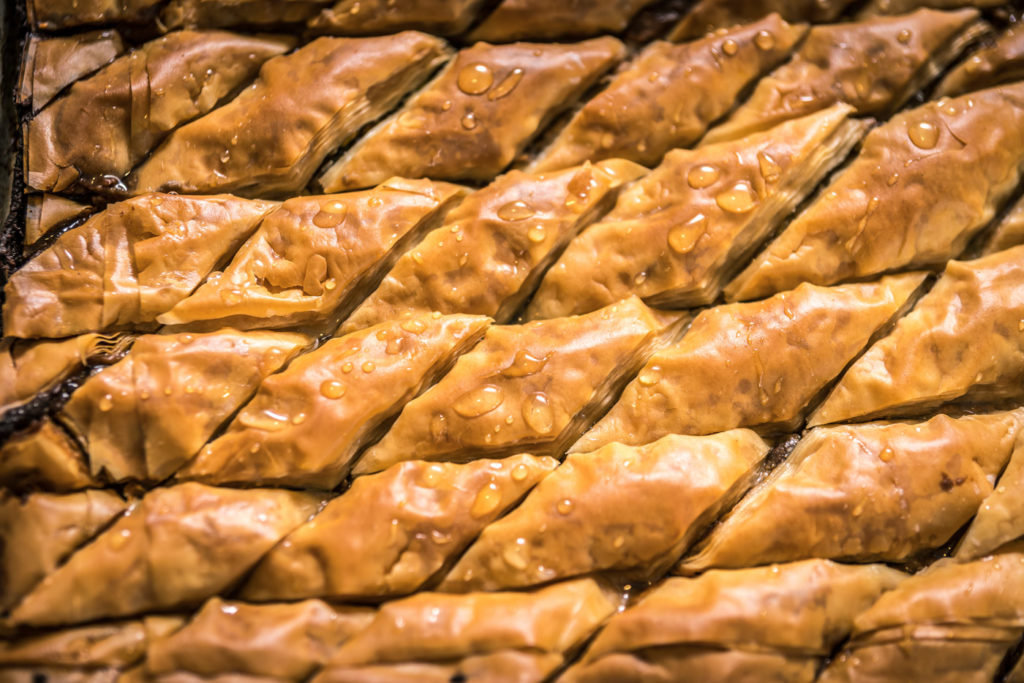
“Travel is fatal to prejudice, bigotry, and narrow-mindedness,” Mark Twain once said.
Charlie was clearly able to come away from his journeys with invaluable insight and experience both in business and on a personal level. And while Twain argued we could all benefit from such perspective, and much has been said in recent years about the perils of living in a political bubble, particularly in coastal cosmopolitan areas like New York City—but world travel is, of course, not available to everyone. Sahadi’s helps remove those barriers, helps combat the kind of ignorance Twain suggests, and does so by opening a portal for its customers—connecting them to parts of the world when they perhaps can’t get there themselves.
Sometimes that is accomplished by educating and indoctrinating them on a product—by offering them something new, and other times, that education comes because of what they can no longer offer.
The kind of turmoil Charlie experienced—and in some cases far worse—roils on in pockets all over the world, and has unsurprisingly played a role in what Sahadi’s has been able to source.
Ron, Charlie’s son, now handles product selection, and reflects on the struggles of being an international importer during uncertain times. “Sometimes with these world events, you find things are happening in a country, and they can’t export anymore,” he says. “It can be a product we’ve had for thirty years and all of a sudden it’s just not available, or the country of origin is now somewhere totally different, and now maybe it’s a slightly different smell or texture or taste.”
Charlie remembers instances over the decades when their practices were called into question. “There were times when things were really bad—where it was difficult to bring merchandise because Lebanon and Syria were known as terrorist areas,” he remembers. “Even though we had a fifty-year track record. It took a lot of time to convince people that we’ve been doing this legitimate business for all these years; when you’ve never found anything illegal, immoral, or any of that coming in with our stuff, why would you put pressure on local business people who are trying to make a living for their family?”
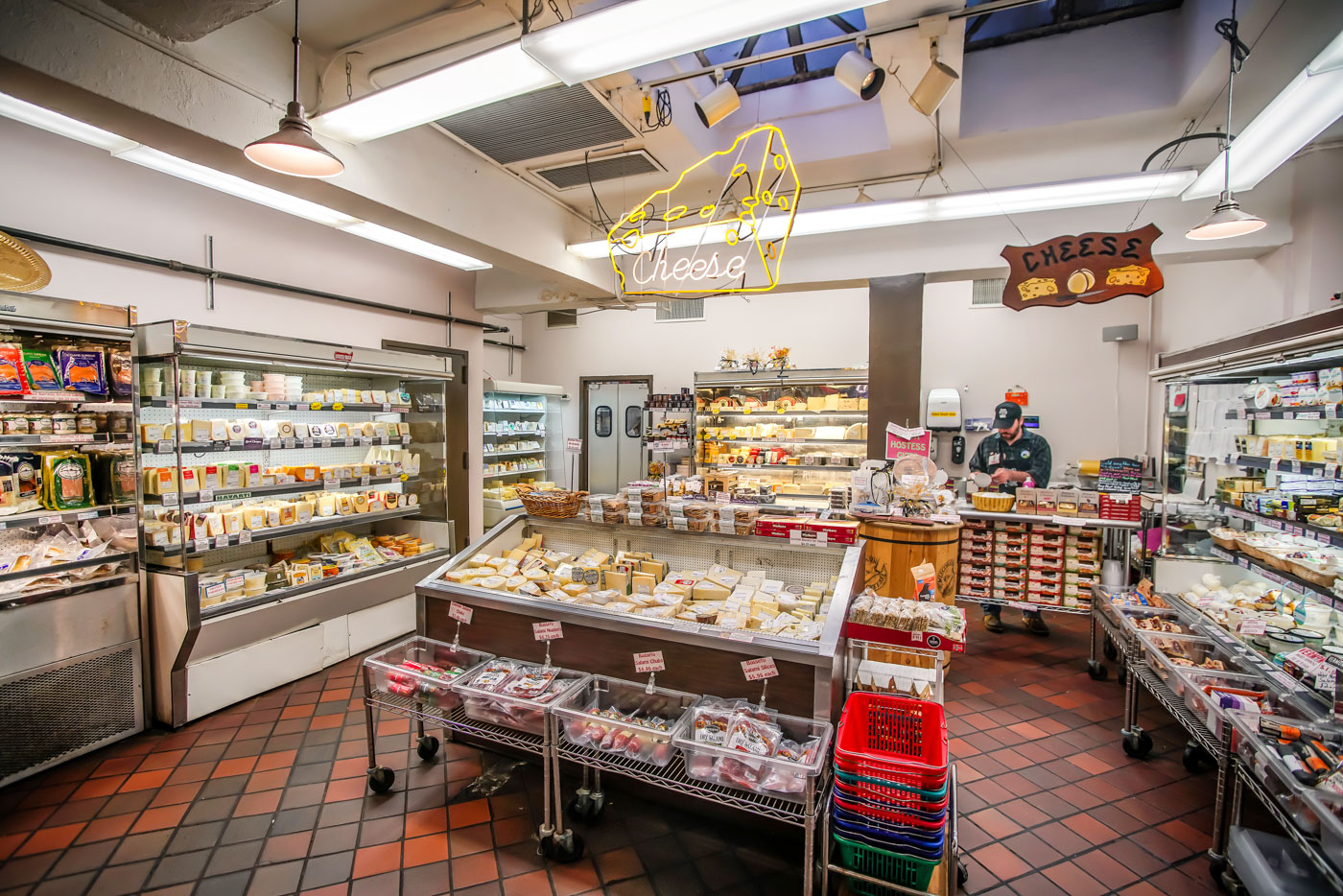
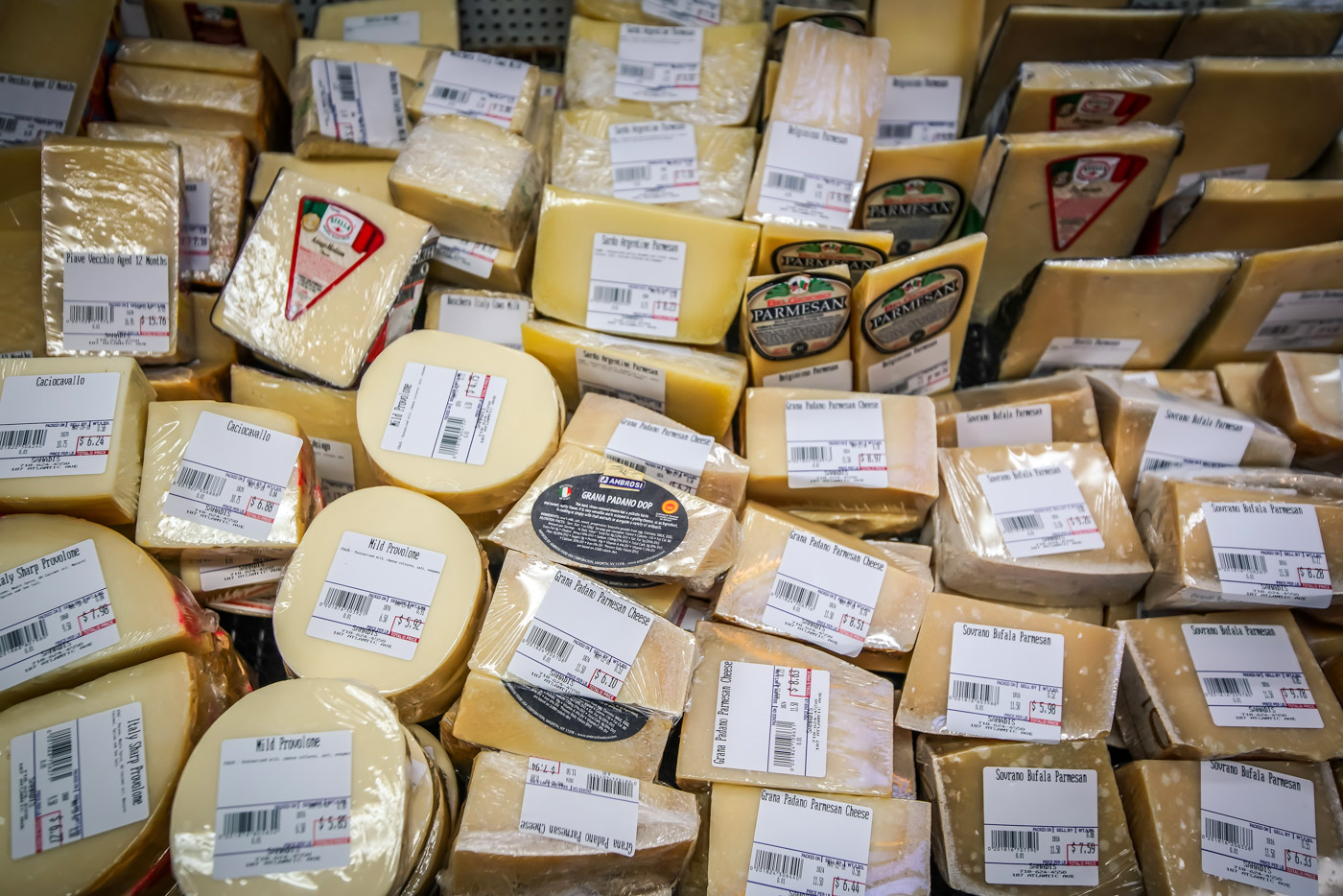
Sahadi’s is no doubt a family business, but its definition of family extends beyond the relatives in that upstairs office. Customers, in some cases, are several generations deep, and employees may be entering second or third decades. Charlie, Ron and Christine feel a responsibility to support that extended family, and running a store with so many departments and moving parts demands more than a neighborhood; it truly takes their own village.
“We generally have between forty and forty-five people on staff,” Christine says. And while they rely heavily on the community, it’s important to the Sahadis to be reliable for their employees in turn. “We don’t lay off people when the business is slow. These are people who have been with us a long time. They’re good people and they’re loyal, and whether or not we need them, we will find something for them to do. They have families to support. We’re a community within the store.”
In a store with thousands of SKUs from dozens of different countries, that staff is also integral to educating the customer. When I later peruse so many items with non-English labels, curious what a bottle of brown liquid or a sandy looking spice might be best used for, I know I’m not alone in depending on the knowledge of those employees. The diversity of workers reflects the spectrum of residents in the neighborhood as much as the products. “We truly appreciate the community we’re in,” Christine says. “People are well-traveled; they’re diverse. They’re globally-minded in this neighborhood; they’ll try anything. They speak twenty languages, and so does my staff.”
They’ve also begun to attract a different kind of customer—young and metropolitan. Food-centric and worldly, well-traveled and comfortable with technology; these are customers that will Google how to use a given ingredient, who will order from the Sahadi’s website to have their halva delivered at home. They’re also customers who frequent the prepared foods section for the sake of convenience.
This is a part of the store of which Christine spearheaded development back in the early 1980s, originally starting with many of her grandmother’s recipes, but developing over the years into a list of more than three hundred rotating items that Christine calls “an interesting blend of very traditional and not traditional at all.”
The food industry’s evolving emphasis on all things local has also forced the longtime importer to consider supporting Brooklyn-made products in a bigger way. The borough’s culture of makers has grown especially vibrant, and in addition to its imported products, Sahadi’s makes a point of making shelf space for enterprising neighbors. “If you bring in a product and one of us likes it, it can be on our shelves tomorrow,” Christine says. “I hope that’s something that never goes away—where a person can make a product and take it somewhere and actually get it on the shelf.” She cites prohibitive slotting fees at larger markets and chains that present challenges for small businesses and limits the customer’s ability to support those efforts. “It will be a very sad state—a very generic world—if all you can buy are things that are available at those big supermarkets.”
The Sahadis are intentional about community involvement not only in the form of business relationships, but philanthropic as well. “We talk a lot about our donation budget—some places have an advertising budget; we have a donation budget,” Christine laughs. “We’re very involved in the community. After 9/11, schools came by to say thanks for being open the next day. There’s not an event within two miles that doesn’t have Sahadi’s hummus at it. There are a lot of really worthy organizations, and a lot of them are very diverse. So much of what you hear in this neighborhood is about people who are really trying to help.”
Charlie is wistful when discussing his home. “I’m a very proud Brooklynite. We have one of the most diverse groups of people in the world right here in our city. This is a real, real, real melting pot; you see every different ethnic background, every different color, every different language on every street. ‘Love thy neighbor’ is a very strong statement. You don’t have to love, but you have to respect and tolerate your neighbor, and if you can get that same thing back from them, you have a beautiful community.”
A museum, the conventional kind, is a place that houses culture and artifacts—evidence of its time and place. It’s a forum for artists to display their work, a home for something they want to express and share with the world. It is a place that transports visitors. At their very best, museums encourage conversation and give a window into the heart of an artist—of another human being. They pay tribute to those people who offer something of themselves to the world, and often push visitors outside their comfort zones.
Throughout the course of my conversation with Charlie, I’m struck not only by the content of what he shares with me, but the precision with which he calls up dates and time frames, histories both of his own and the world. It feels to me as if, had he not been born into the importing business, he may have had another life as a historian or curator.
Before I leave Sahadi’s, I look around before I walk out the door—at the clerks giving samples of Turkish figs, or serving a hot cup of Ethiopian coffee, or carving a slice of Pecorino from a wheel straight from Italy, or selling pickles made in Prospect Heights. “It’s a small world,” Charlie says, toward the end of our time together. He’s referring to his little part of Brooklyn. But it is thanks to the efforts of families like his that the world is small. That other cultures are within reach. That distinct contributions from all over the globe, sitting proudly side by side, can inspire customers to take and adopt as their own, to create with and expound upon and share and proliferate—and not only so we can have just the proper seasoning for our Sunday shakshuka experiment.
The world is constantly changing, both in Brooklyn and around the globe—something Sahadis have seen for more than half a century. During a time when it’s easier to remain isolated from your neighbors—to shut your door at the end of the day—standing inside Sahadi’s, beside people of all backgrounds, is a reminder that we are all speaking the same language, not only across oceans and continents, but across the street, across the hall, and across the aisle.





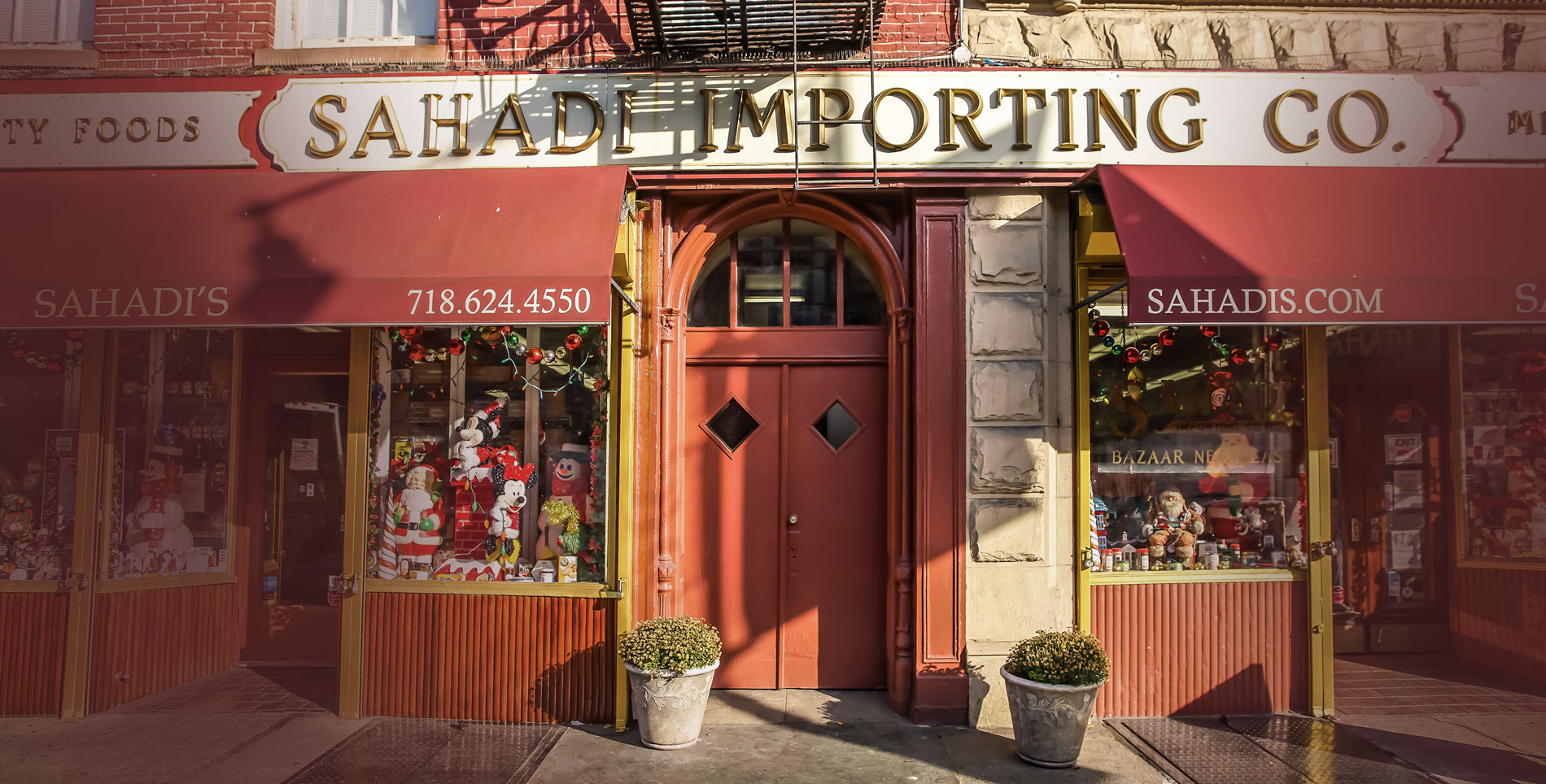

Our comments section is for members only.
Join today to gain exclusive access.